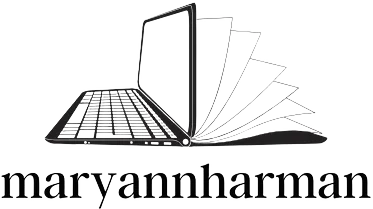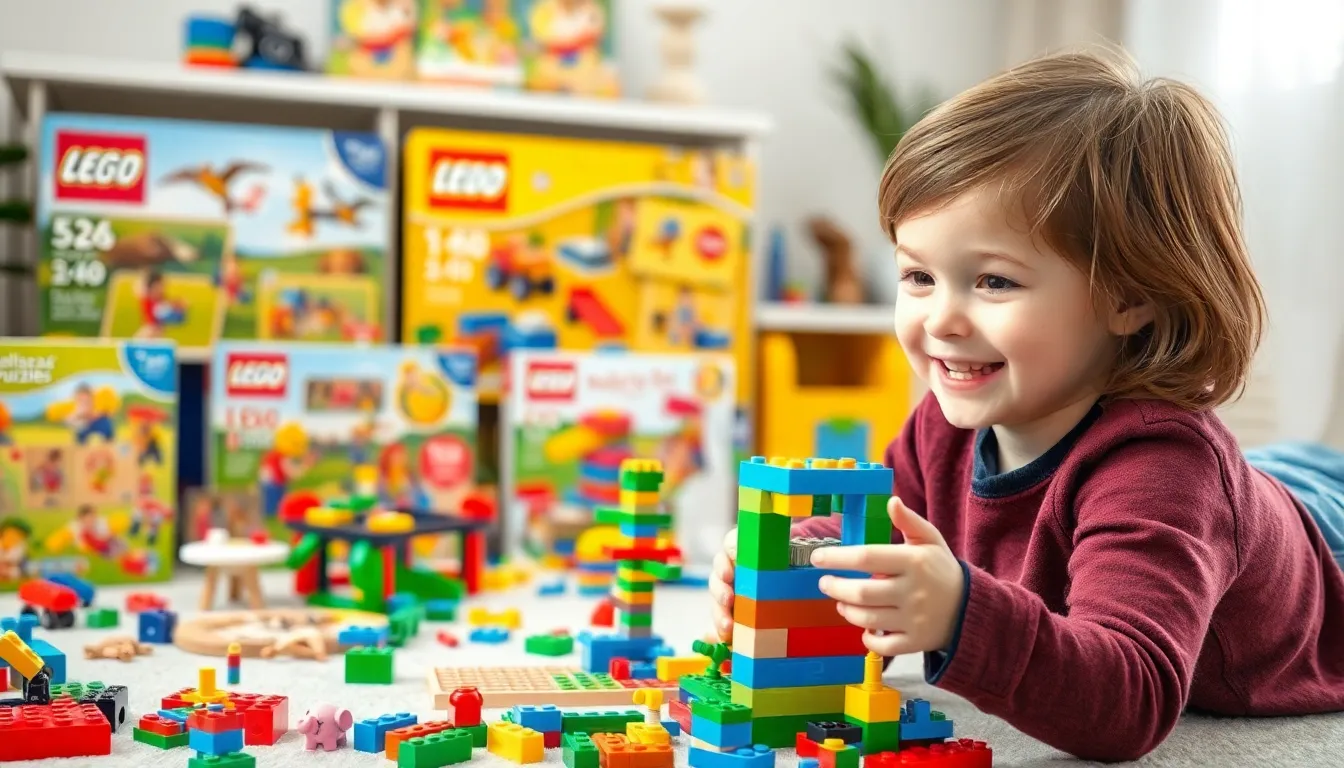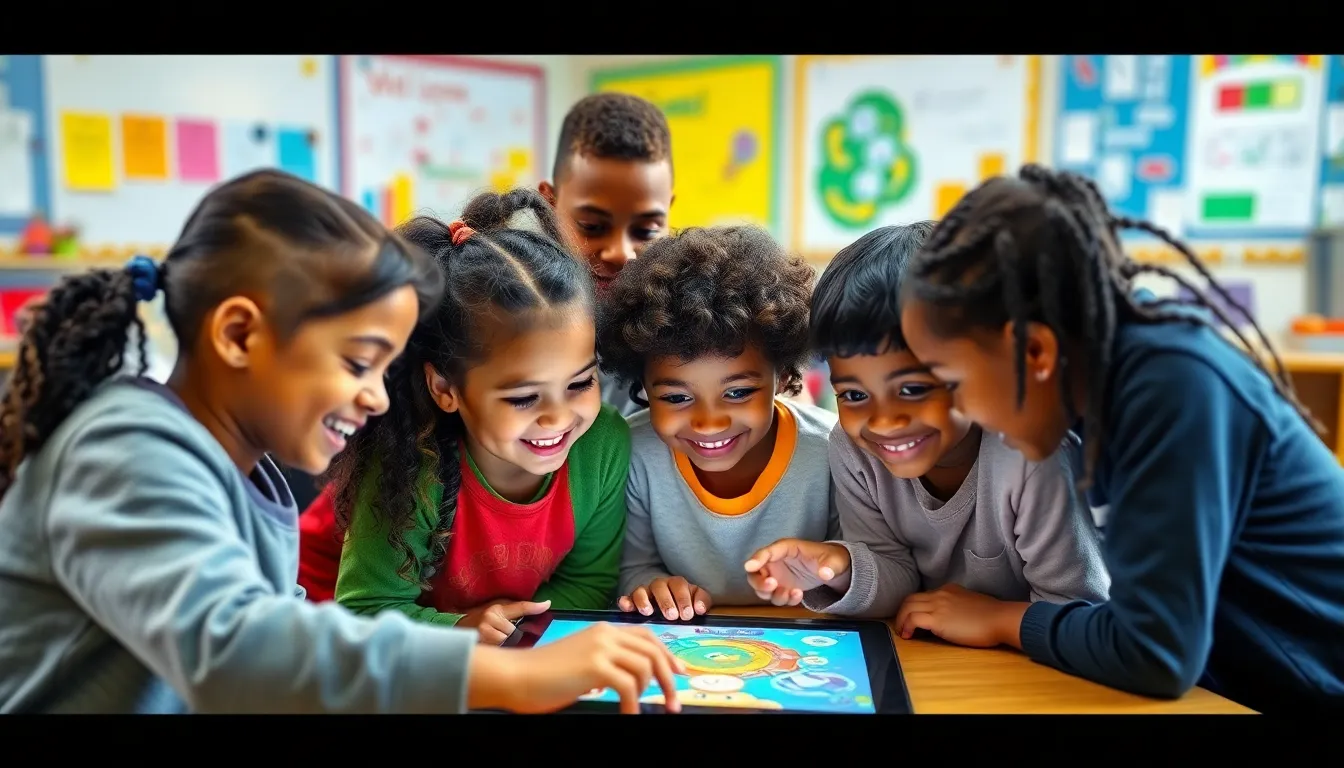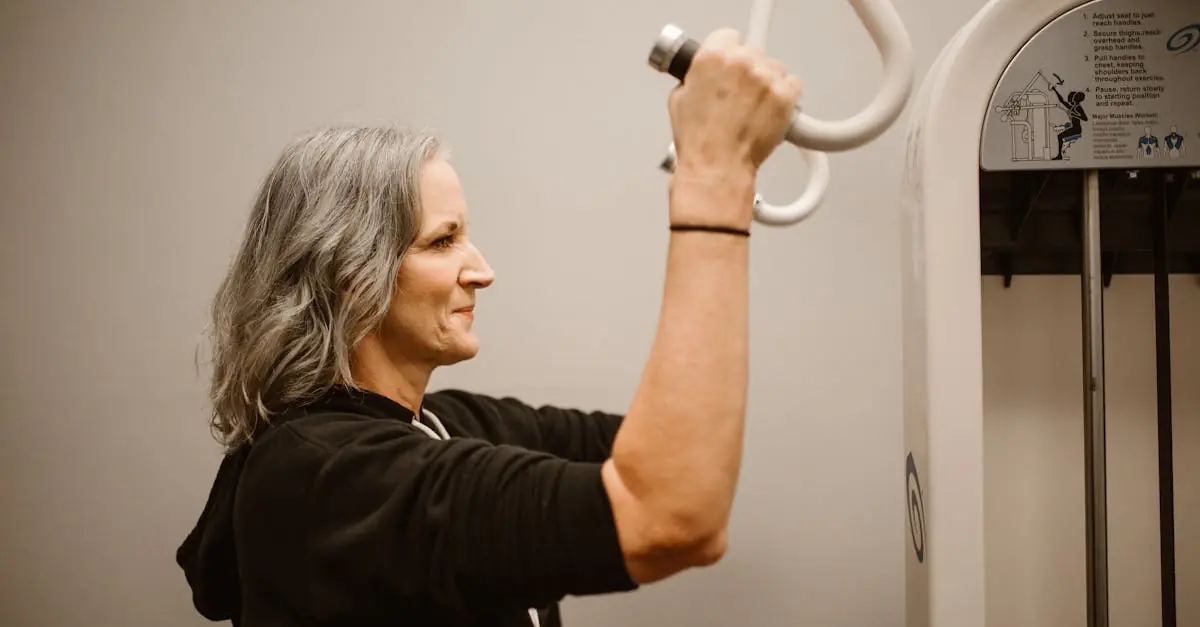Table of Contents
ToggleIn a world where learning can often feel like a chore, educational toys are the superheroes swooping in to save the day. They transform playtime into an adventure, sparking curiosity and creativity while kids think they’re just having fun. Who knew that building blocks could teach engineering principles or that a simple puzzle could sharpen problem-solving skills?
Overview of Educational Toy Market Leaders
Numerous companies dominate the educational toy market, shaping how children learn through play. Brands like LEGO, known for their versatile building blocks, promote creativity and critical thinking skills. Fisher-Price specializes in toys that engage infants and toddlers, laying a strong foundation for early development.
Melissa & Doug excels in creating wooden toys that emphasize imaginative play, encouraging problem-solving abilities. They focus on craftsmanship, ensuring durability and safety, which appeals to parents. VTech brings technology into learning through interactive gadgets that foster cognitive growth among preschoolers.
Playskool combines fun and education, targeting younger audiences with toys that enhance motor skills and social interaction. BrainQuest produces educational cards that stimulate learning across various subjects, making knowledge acquisition enjoyable.
Additionally, companies such as LeapFrog develop tech-driven toys that provide personalized learning experiences tailored to children’s individual needs. These market leaders continuously innovate, integrating educational principles into their products, ensuring they capture children’s interests while promoting development.
With numerous options available, parents can find educational toys suited to different age groups and learning stages. The diversity within the market aids in addressing various developmental milestones, making it easier for children to gain essential skills during crucial growing years.
Key Players in the Industry
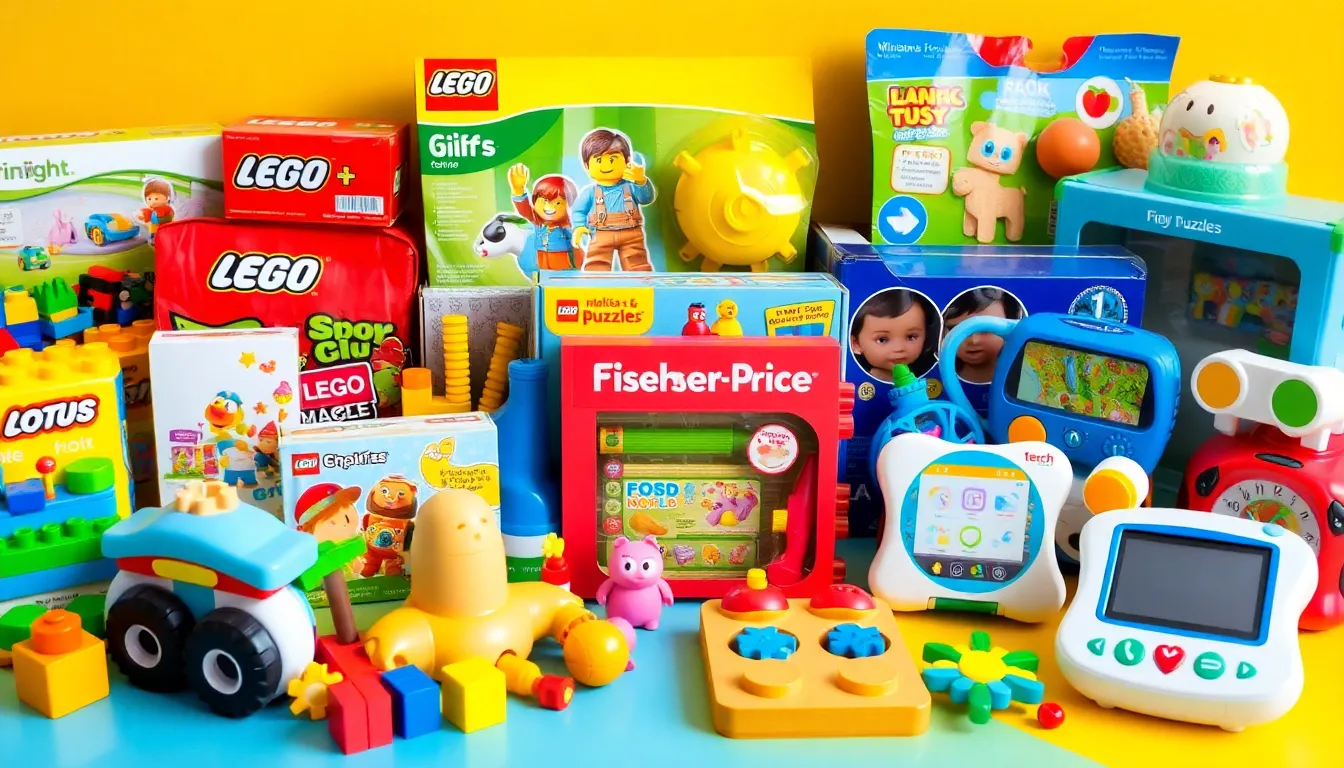
Prominent companies dominate the educational toy market, setting benchmarks for quality and engagement. Their innovative approaches to learning through play capture children’s interest and foster development.
Company Profiles
LEGO leads the market with its focus on creativity and critical thinking, offering versatile building sets that spark imagination. Fisher-Price addresses early developmental needs through toys designed for infants and toddlers, promoting essential skills. Melissa & Doug relies on durable wooden toys that encourage imaginative play, making them a favorite among parents. VTech contributes by integrating technology in its products, paving the way for personalized learning experiences. Meanwhile, Playskool and BrainQuest enhance motor skills and stimulate learning across various subjects, appealing to different age groups.
Market Share Analysis
LEGO holds a significant portion of the educational toy market, commanding approximately 28% of the market share. Fisher-Price follows closely with a market share of around 15%, focusing on foundational learning. Melissa & Doug registers approximately 10% of the market, emphasizing traditional play. VTech accounts for about 8%, showcasing the growing importance of tech-driven educational tools. Other brands like LeapFrog and Playskool contribute to the diversity, splitting the remaining market share and catering to specific developmental needs across age ranges.
Trends Influencing the Market
Several trends significantly shape the educational toy market. Companies leverage these trends to enhance their product offerings and meet consumer demands effectively.
Technological Advancements
Advancements in technology drive the educational toy sector forward. Brands like VTech introduce tech-driven toys that personalize learning experiences. Interactive features, such as touchscreens and apps, engage children while promoting cognitive growth. Robotics and coding kits allow kids to explore STEM concepts actively. Educational tools also incorporate augmented reality, elevating engagement levels. This blend of learning and fun keeps children interested, making technology a pivotal foundation in the modern educational toy landscape.
Consumer Preferences
Consumers increasingly favor educational toys that balance learning with entertainment. Parents prioritize products that support developmental milestones and essential skills. Brands like LEGO and Fisher-Price adapt their offerings to meet these preferences, emphasizing creativity and foundational growth. Eco-friendly materials also capture attention, reflecting a rising awareness of sustainability among buyers. Choices now reflect a commitment to durability and educational value, ensuring parents invest in toys that contribute positively to their children’s growth.
Challenges Faced by Market Leaders
Leading companies in the educational toy market encounter several challenges. These challenges shape their strategies and influence their ability to maintain market dominance.
Competition Analysis
Competition within the educational toy sector remains fierce. LEGO, with a 28% market share, faces rival brands like Fisher-Price and Melissa & Doug, holding 15% and 10%, respectively. Companies constantly innovate to capture consumer attention, making it essential for market leaders to differentiate their products. Introducing new features and unique designs helps maintain relevance in a rapidly evolving marketplace. Players like VTech and LeapFrog further intensify competition by incorporating technology into their offerings, appealing to tech-savvy parents. As brands strive for consumer loyalty, analyzing competitors’ strategies becomes crucial to staying ahead.
Supply Chain Issues
Supply chain disruptions pose significant challenges for market leaders. Companies experience delays in obtaining materials, impacting production timelines. For instance, sourcing eco-friendly materials that consumers increasingly demand can complicate logistics. Managing these issues requires strategic partnerships with suppliers to ensure consistency in quality and delivery. Additionally, fluctuations in demand can lead to inventory mismanagement, resulting in excess stock or shortages. Prioritizing effective supply chain strategies strengthens market position and enhances brand reliability among parents. Companies need to adapt quickly to these challenges to maintain momentum in a competitive landscape.
Future Outlook for Educational Toys
The educational toy market is expected to continue its growth trajectory, driven by the increasing demand for innovative products that enhance learning through play. Predictions indicate that market leaders like LEGO, which controls around 28% of the market, may expand their offerings to include more STEM-focused toys. Fisher-Price, holding approximately 15% of the market share, is likely to prioritize developmentally appropriate products that support early learning.
Changing consumer preferences also play a significant role in shaping the future. Parents increasingly seek toys that combine educational value with entertainment. VTech, with around 8% of market share, is set to lead the charge in integrating technology into its products, providing personalized learning experiences that resonate with engaged learners.
The market’s diversity allows toys to cater to different age groups and developmental stages. For example, Melissa & Doug, capturing roughly 10% of the market, emphasizes creative play and craftsmanship through its durable wooden toys. Companies such as Playskool and BrainQuest contribute to this ecosystem by enhancing motor skills and stimulating learning across various subjects.
Emerging trends indicate that eco-friendly and sustainable materials will gain traction among consumers. This preference aligns with parents’ desire for products that promote environmental responsibility while ensuring durability in often-played-with toys. Brands must adapt to this shift to remain competitive.
Challenges such as supply chain disruptions and intense competition will continue to impact market leaders. Companies like LEGO and Fisher-Price will need to navigate these issues effectively to enhance product offerings and ensure reliable delivery. The ability to innovate and meet customer needs in a rapidly changing landscape will be crucial for sustaining market positions in the coming years.
The educational toy market is vibrant and evolving with strong leaders driving innovation. Companies like LEGO, Fisher-Price, and Melissa & Doug are not just competing for market share but are also redefining how children learn through play. As technological advancements shape consumer preferences, brands are increasingly focusing on creating engaging and educational experiences.
With a growing emphasis on eco-friendly materials and durability, parents are more discerning than ever in their choices. The future looks promising as these market leaders adapt to challenges and trends, ensuring that educational toys remain a vital part of childhood development. The landscape will continue to transform, making learning fun and impactful for the next generation.
